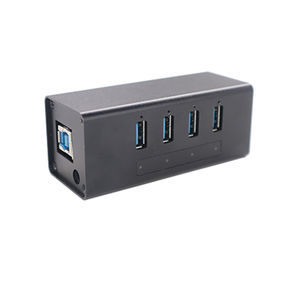
- Products
- Catalogs
- News & Trends
- Exhibitions
Circuit board HDI

Add to favorites
Compare this product
Description
Choosing a PCB manufacturer that can create high-density interconnect (HDI) PCBs for your application is a very important decision. HDI PCBs can be stacked, flexed, or micro via based. The structure of the PCB is also important to consider.
Structure of HDI PCBs
Unlike traditional PCBs, HDI PCBs have finer and densely routed layers and micro vias. This allows more technology to be incorporated in a smaller circuit area. These boards are used for applications such as wearable electronics, medical equipment, and defense systems.
The manufacturing process is more complex and requires specialized equipment. In addition, the layout design of HDI PCBs includes thinner traces and more components. The components used on the board include SMD and BGA components that have high pin counts. These components can decrease trace width and improve reliability.
In addition, HDI PCBs use blind or buried vias to interconnect different layers. These vias are drilled, laser drilled, or mechanically drilled. The buried vias can be filled with conductive paste or partially cured dielectric material from the lamination process.
The micro vias used on HDI boards are drilled using laser drill technology. The micro vias have diameters of less than 6 miles. The proper arrangement of these microvias is critical for signal integrity and reliability.
These boards are used in applications that require high density and high speed signal transmission. This type of PCB is also used in mobile phones and wearable electronics. They are also used in defense systems and sensitive aerospace equipment.
Related Searches
- PCB
- Multilayer PCB
- Circuit board
- Double-sided PCB
- 2-layers PCB
- 4-layers PCB
- 8 layers PCB
- High-frequency printed circuit board
- 10 layers printed circuit board
- 6 layers PCB
- Long printed circuit board
- 1 layer printed circuit board
- 14 layers printed circuit board
- 10 layers printed circuit board
- 40 layers printed circuit board
*Prices are pre-tax. They exclude delivery charges and customs duties and do not include additional charges for installation or activation options. Prices are indicative only and may vary by country, with changes to the cost of raw materials and exchange rates.








